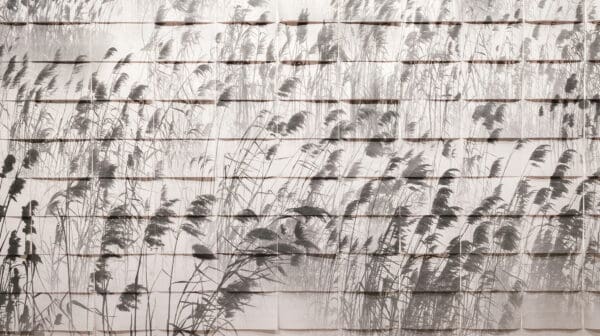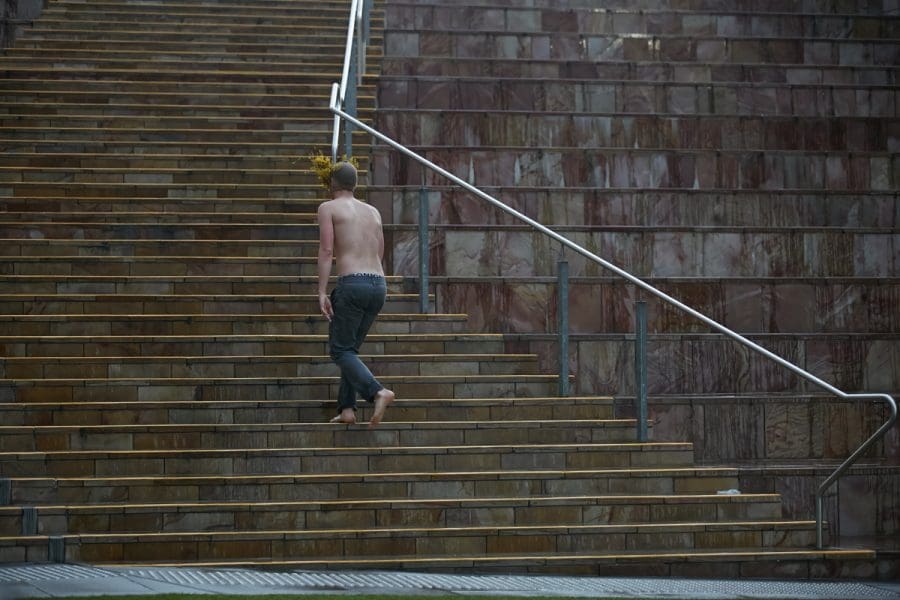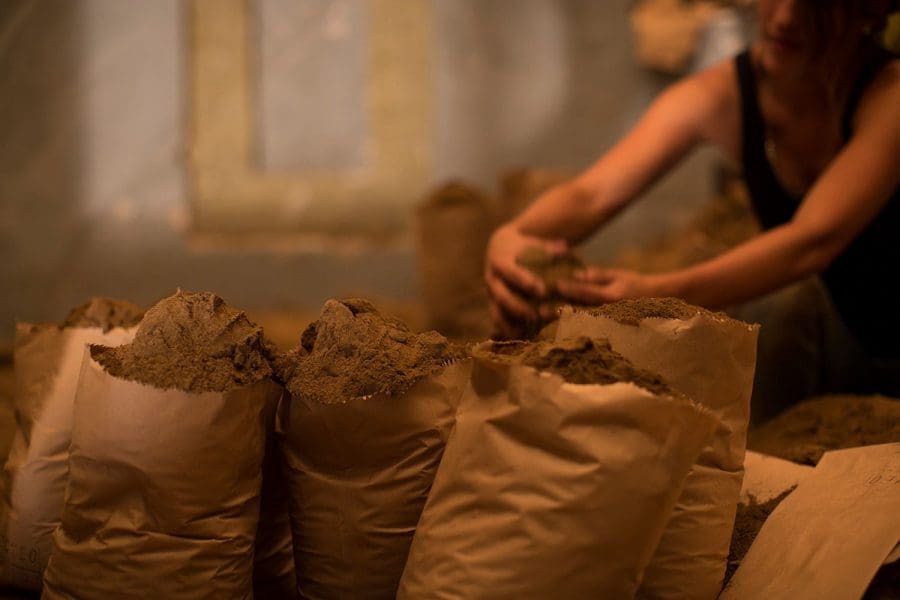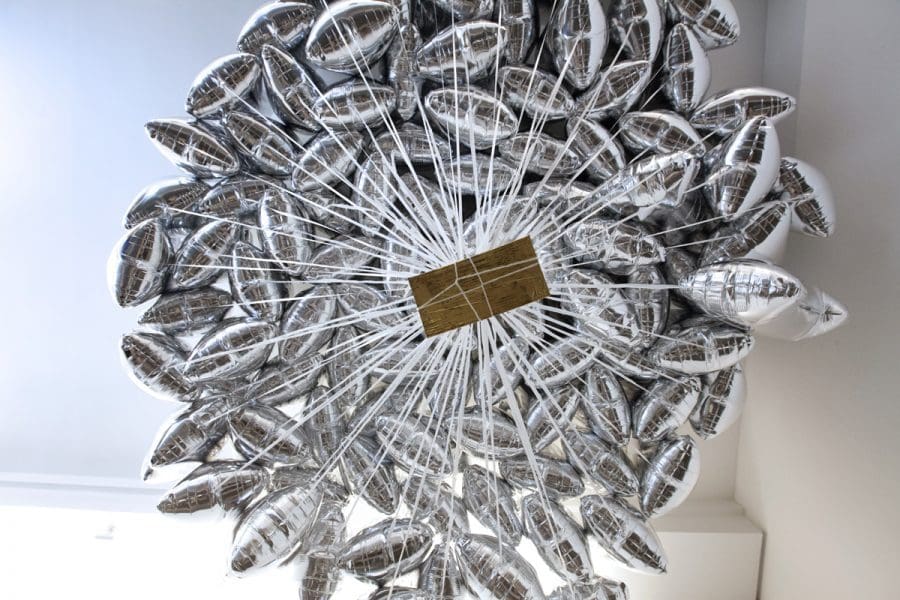
Poetics of Relation
Tender Comrade, currently on show at Sydney’s White Rabbit Gallery, creates a new vocabulary of queer kinship by reimagining the relationship between artworks, bodies and space.




On 20 September 2013 Ivan Sikic took off his top, donned a mask made of wattle and spent four hours going up and down the steps of the Federation Square amphitheatre. Then he hailed a taxi to take him to Tullamarine and promptly boarded a flight to Lima, Peru.
Eight months later and he was devoting himself to another lengthy performance, this time walking for four hours to a train station in the Dandenong Ranges, all the while covering in gold leaf, an Aboriginal performer accompanying him.
Sikic, who grew up in Peru, lived in Melbourne for 11 years and now lives in Brooklyn, New York with his Mexican wife, uses performance to highlight aspects of contemporary life.

He spends at least an hour each day combing international news (through online newspapers, television and Facebook feeds) and then conducts more research to devise site-specific works that highlight – to take the Australian shows as examples – the difficulty establishing a life in a foreign country, mass consumerism and the tensions relating to Aboriginal culture.
The first performance that really struck an international chord, though, was one he did early last year in Lima in response to illegal gold mining in Peru. He filled an abandoned house with 36 cubic metres of soil, buried inside a $US2000 gold nugget and then invited the public to try their luck finding it with the promise that he or she could then keep it. It received press coverage in several countries, as did the piece he did a few months later in Valencia, Spain of 99 helium-filled foil balloons holding up a gold brick to represent the enormous wealth owned by just one per cent of the world’s population.
Sikic, who completed post-graduate studies at the Victorian College of the Arts, is now preparing to do a performance a piece in New York – on all the rubbish to be found in the streets of that city. Every day for eight days (in reference to the more than 8 million people living there) he is planning to pick up between 500 and 600 grams of rubbish and paint it gold. “We find it so difficult to think beyond one or two generations but gold is one of the only things that transcends that time. It remains in the same way that trash in landfill stays present.”

When we speak in Melbourne – during a two-and-a-half week visit for Sikic to work on a commercial advertising display – he says he is preparing for his next art project on a laptop but when he gets back to New York he is moving into a studio with a profusion of space for “prototyping and testing”.
He says it is his first-ever formal studio and that he is looking forward to working “in a community of artists with all sorts of practices”. No matter that he is “terrible at painting, terrible at drawing”, he is very particular with his performances.
“I always create my things small scale before I do them in the real world, and I want to be as educated [about the issue addressed by the work] as I can. I like to think that everything I put together has been thoroughly thought through and that every detail has meaning.”
And for an artist who “feels like a complete nomad” the context is critical. But Sikic, who “questions the question of cultural identity all the time”, maintains that, even though his works start as a very “localised direct response”, they also speak about wider issues and can translate into other contexts.
Sikic says he was first inspired to use the precious metal by the Japanese art form of Kintsugi, in which broken pottery is repaired with gold or another metal in such a way that makes flaws something to be celebrated. “Rather than hiding imperfections they elevate them to make a vessel more beautiful.”
Now he has diversified into copper and has just finished a time capsule made out of a copper tube that encloses “a work that represented the last 12 months of my life”. It is the first of 33 such tubes he will be now be making yearly. “I am a bit impatient and the first thing I wanted was to see them all done.”
But he resisted the urge and the final capsule wont be finalized until he is 66, which will make it the “slowest long durational work” he has done yet.